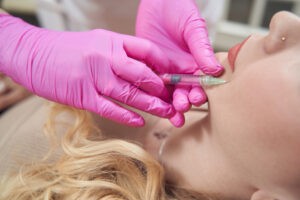
Understanding the Skin Microbiome and Its Role in Skin Health
The skin microbiome is a complex ecosystem of bacteria, fungi, and other microorganisms that live on the skin’s surface. These microbes play a crucial role in protecting against pathogens, regulating inflammation, and maintaining healthy skin function. When the microbiome is balanced, skin appears clear, hydrated, and resilient. However, when disrupted, issues like acne, rosacea, eczema, and sensitivity can arise.
Factors such as harsh skincare products, antibiotics, and environmental pollutants can destabilize the microbiome, leading to irritation and breakouts. Given this delicate balance, many wonder how laser resurfacing treatments—which involve exfoliating or removing layers of skin—impact the microbiome. Could they actually help restore balance, or do they pose a risk to healthy bacteria?
How Laser Resurfacing Affects the Skin Barrier
Laser resurfacing is designed to improve skin texture, tone, and overall appearance by stimulating collagen production and removing damaged skin cells. There are two main types of laser treatments:
- Ablative lasers (such as CO2 and Erbium lasers) remove outer layers of skin to promote cell turnover.
- Non-ablative lasers (such as Fraxel and Nd:YAG) work on deeper skin layers by stimulating collagen production without peeling away skin.
Since the skin’s microbiome heavily depends on the stratum corneum (the skin’s outermost barrier), resurfacing procedures temporarily alter the environment where these beneficial bacteria thrive. The concern is that removing layers of skin could lead to an imbalance in microbial populations, potentially increasing the risk of infections, irritation, or prolonged inflammation.
Can Laser Resurfacing Help Balance the Microbiome?
Interestingly, some research suggests that controlled damage to the skin—such as from laser treatments—can actually help reset the microbiome. Here’s how:
-
Eliminating Harmful Pathogens – Skin conditions like acne and rosacea are often linked to an overgrowth of harmful bacteria such as Cutibacterium acnes or Staphylococcus aureus. By removing older layers of damaged skin, laser resurfacing may help reduce these imbalances and create a healthier microbial environment.
-
Stimulating Regeneration – After treatment, the skin goes through a healing process in which new cells form, and microbial colonies repopulate. With proper aftercare, this process can promote a more diverse and resilient microbiome.
-
Encouraging a Stronger Barrier – Some researchers believe that a well-functioning skin barrier supports healthier microbial diversity. Since laser resurfacing encourages collagen production and improves skin structure, it may indirectly promote a more stable microbiome over time.
What to Expect After Laser Resurfacing
While laser resurfacing has potential benefits for the microbiome, the initial healing phase requires special care. Here’s what to expect:
- Increased Sensitivity – The absence of a strong outer barrier means your skin is more vulnerable to irritation and bacterial imbalances.
- Temporary Redness and Peeling – As the skin regenerates, the microbiome undergoes changes that may cause fluctuations in oil production and hydration.
- Potential for Temporary Breakouts – Some patients experience mild post-treatment purging, where acne flares up as the skin detoxes.
To support microbiome recovery, dermatologists often recommend:
- Probiotic skincare products – These help restore beneficial bacteria.
- Avoiding harsh cleansers and exfoliants – Gentle products protect the healing barrier.
- Hydrating and moisturizing – A well-hydrated barrier promotes microbial balance.
- Strict sun protection – UV damage can worsen imbalances and slow recovery.
Should You Consider Laser Resurfacing for Microbiome Health?
While laser resurfacing isn’t primarily designed to correct microbiome imbalances, it may help individuals struggling with conditions linked to bacterial overgrowth, such as acne or rosacea. However, success depends on proper post-treatment care and working with a skilled provider who understands your skin’s unique needs.
If you’re curious about how laser resurfacing could benefit your skin, consult with an expert to determine whether it’s the right approach for your concerns. Book a consultation today to explore this advanced treatment and give your skin the care it deserves!

